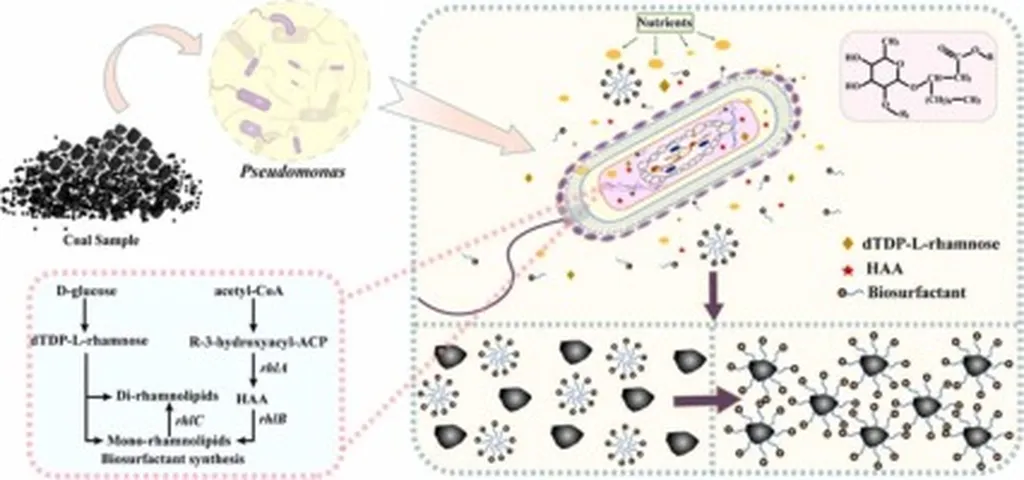In the heart of China’s coal country, a groundbreaking study is shedding new light on how to make coal mining safer and more efficient. LI Nannan, a researcher at the Bulianta Coal Mine of Shendong Coal Group Co., Ltd., has been exploring the use of biosurfactants to improve the wettability of coal dust, a critical factor in mitigating the health risks faced by coal miners.
The study, published in the Journal of Mining Science (矿业科学学报), focuses on two surfactants with different numbers of glucose molecules: n-Dodecyl β-D-maltoside (DDM) and Alkyl Polyglucoside 1214 (APG1214). The research combines experimental and simulation methods to investigate how the number of glucose molecules affects the wettability of coal dust.
“Rational use of appropriate dust suppressants could effectively mitigate the impact of respirable coal dust on the health of coal miners,” LI Nannan explains. The study found that DDM, with its larger number of glucose molecules, exhibited superior wettability performance on Bulianta lignite, with a contact angle value of only 20.1° and a wetting dynamics model diffusion and penetration constant K value of 0.76858.
The implications for the energy sector are significant. Improved wettability means better dust suppression, which can enhance air quality in underground mines and reduce the risk of explosions. “DDM further enhanced the pore structure and specific surface area of coal dust, showing a stronger aggregation effect on coal dust particles,” LI Nannan notes. This could lead to more efficient mining operations and reduced environmental impact.
The study also revealed that the increase in hydroxyl functional groups and the proportion of oxygen elements indicated a significantly enhanced adsorption capacity of DDM on the Bulianta coal surface. Molecular dynamics modeling showed that the larger number of glucose molecules in DDM surfactant facilitated the formation of stronger hydrophobic interactions with the coal surface, attracting more water molecules to adsorb on the modified coal surface. The resulting hydrogen bonds could improve coal dust wettability.
This research could shape future developments in the field by providing a more sustainable and effective approach to coal dust suppression. As the energy sector continues to evolve, the need for innovative solutions to enhance safety and efficiency becomes increasingly critical. LI Nannan’s work offers a promising avenue for exploration, with the potential to make a significant impact on the industry.
In the quest for safer and more efficient coal mining, LI Nannan’s research stands as a beacon of innovation, offering a glimpse into a future where technology and sustainability go hand in hand. As the energy sector continues to grapple with the challenges of the 21st century, studies like this one will be instrumental in shaping the path forward.

